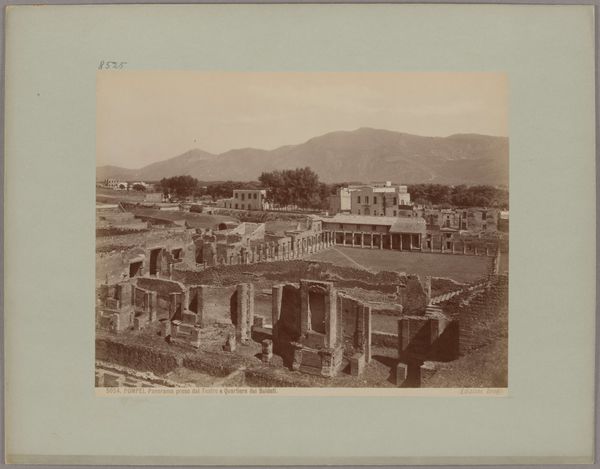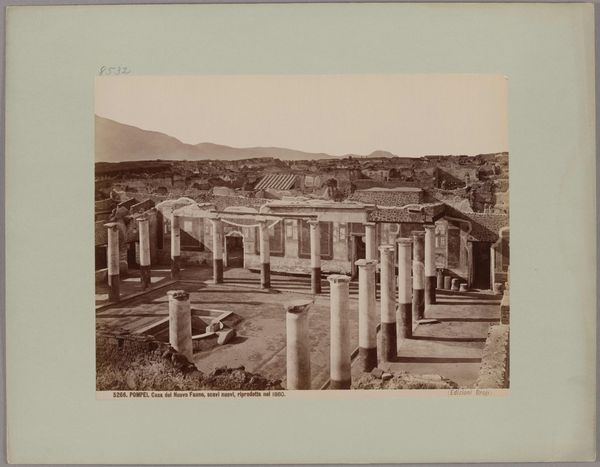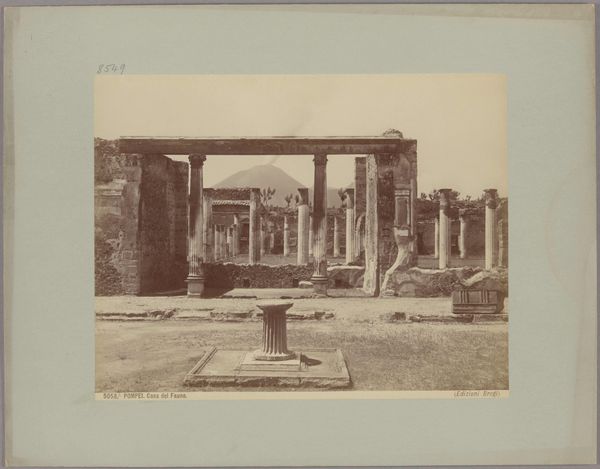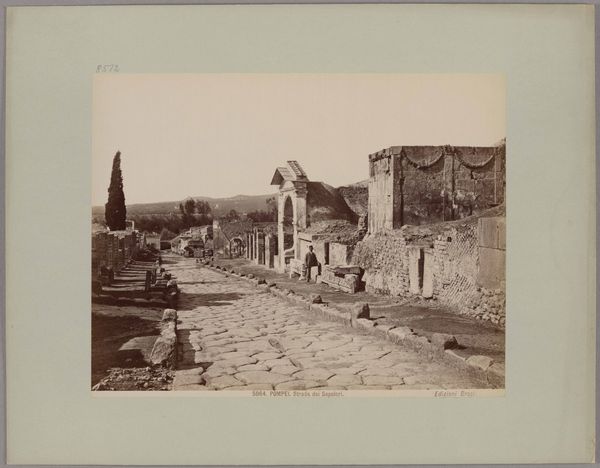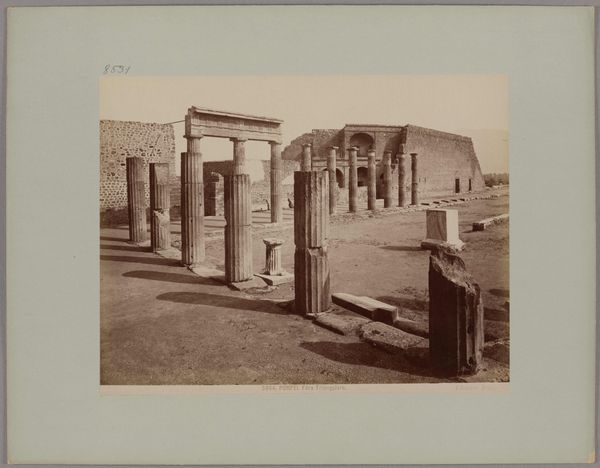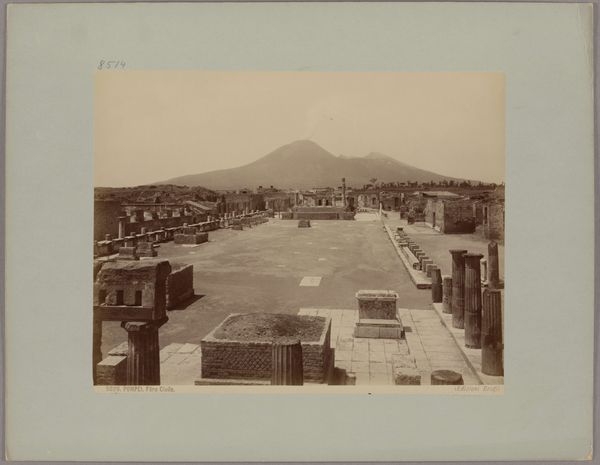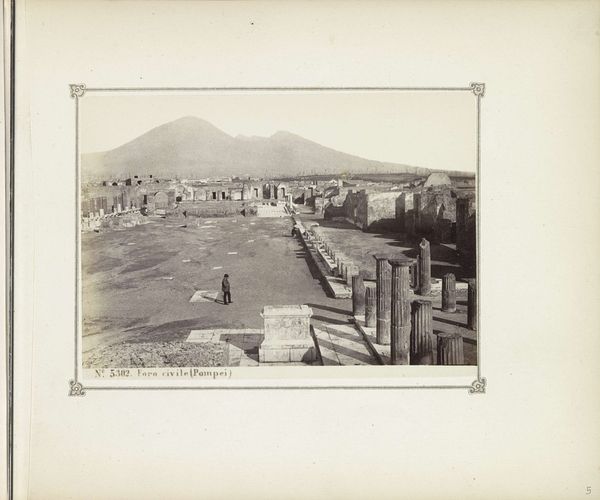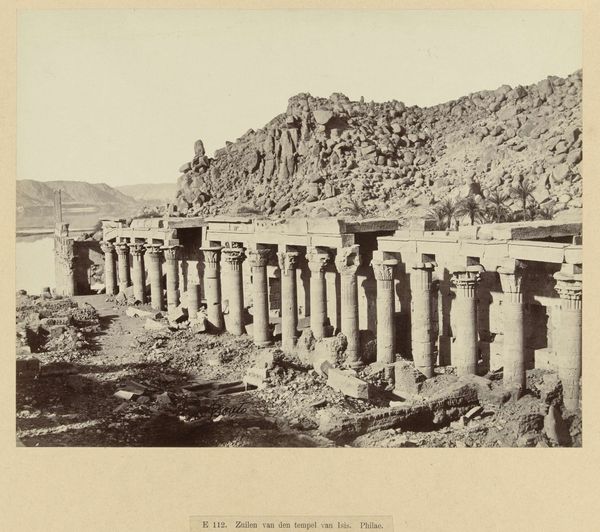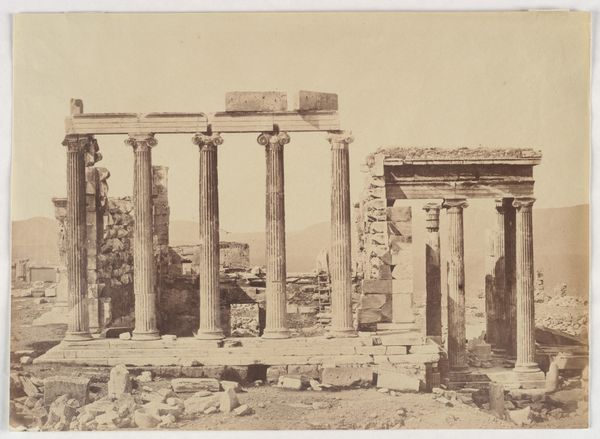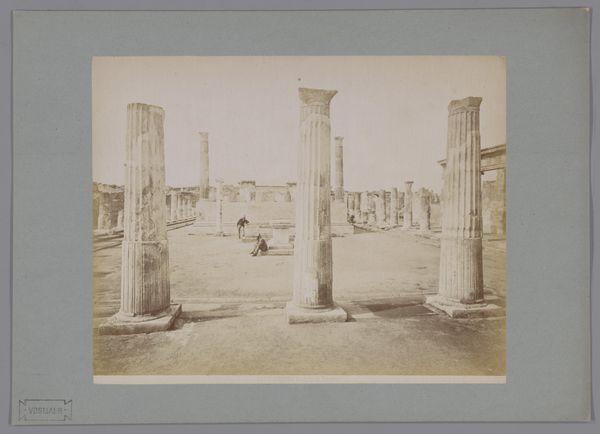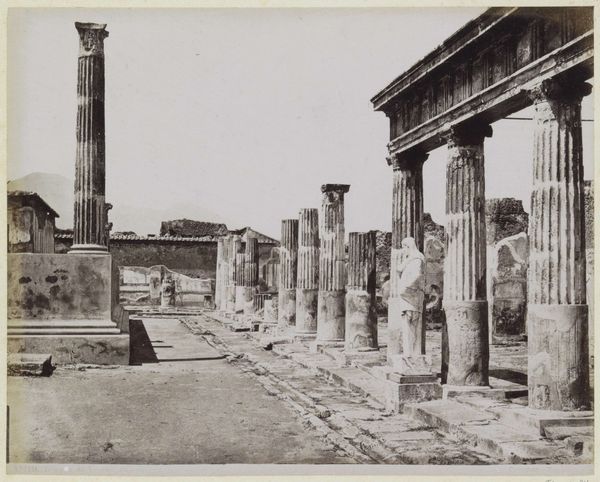
albumen-print, print, paper, photography, albumen-print, architecture
#
albumen-print
# print
#
landscape
#
paper
#
photography
#
pencil drawing
#
column
#
albumen-print
#
architecture
Copyright: Public Domain
Curator: Here we have an albumen print from around 1880 to 1890 by Giacomo Brogi titled "Pompeii, House of the Emperor of Germany, No. 10219". Editor: The sepia tones give it such a timeless feel. It's melancholic, yet those imposing columns hint at the power that once resided here. Curator: Absolutely. Beyond the aesthetic, Brogi's photograph encapsulates the complex power dynamics inherent in archaeological tourism of the late 19th century. "The House of the Emperor of Germany" reflects imperial desires to connect with and legitimize themselves through the grandeur of the Roman past. Editor: The symbolic weight of those columns cannot be overstated. Even in ruin, they speak to a system of belief and order. They stand, like relics, still echoing with stories of power. Do you think the framing suggests a specific reading? Curator: I do. By focusing on a specific 'house', Brogi directs the gaze, almost scripting a narrative. Whose stories get centered? Who gets to claim ownership of this past, even in name? The label “Emperor of Germany” suggests a purposeful appropriation of Roman grandeur for contemporary nationalist projects. It’s about making connections across time to create legitimacy. Editor: You're right, the columns visually link the present to the distant past. But the emptiness… what stories aren’t being told? What other people once dwelled or walked through this same space. Curator: Exactly! The women who lived in these houses, the enslaved people who labored here, the tradespeople and merchants—their stories are rendered silent. Editor: This photograph almost becomes a symbol in itself— a monument to what survives but also to what's inevitably been lost or overwritten. The ruins speak but it takes us, contemporary interpreters, to excavate beyond that immediate image and uncover the narratives embedded in these layers. Curator: Yes, this single photograph holds a mirror to both the Roman world and the late 19th century, reflecting desires, biases, and the selective shaping of history to legitimize power. Editor: So much contained within a single frame, inviting questions that transcend time itself.
Comments
No comments
Be the first to comment and join the conversation on the ultimate creative platform.
